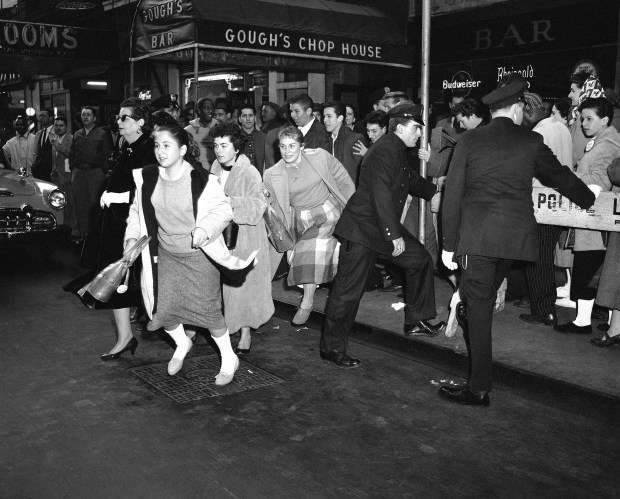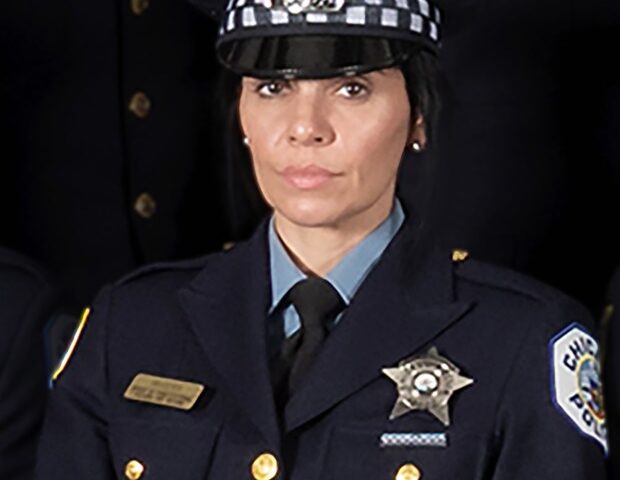Fame fades. Names and accomplishments, no matter how large and striking, can become buried in history’s dust, reduced to but a whisper, if that, across the years.
“Paul Robeson is an under-appreciated giant of the 20th century,” says Lasana Kazembe, assistant professor of education at Indiana University in Indianapolis, a performer, poet, and the co-creator of the new “Paul Robeson: Man of the People,” a new jazz poetry opera. “There is a learning gap concerning Mr. Robeson. There is a lot of work I, we, have to do to bring his story to a new generation and to remind older generations about this man.”
This show premieres here on Friday but was seeded long before, when Kazembe was growing up in the Englewood neighborhood and attending Paul Robeson High School. “So, yes, I knew the name but it was not until I began college that I started to dig deeply into the life of this remarkable man,” he says.
As he traveled the academic road to a doctorate, he would learn plenty.
Born April 9, 1898, Robeson was the son of a runaway slave who had become a minister. He became an All-America football player at Rutgers University, where he won a dozen varsity letters and was the school’s valedictorian; he played professional football in what would become the NFL; was a lawyer after attending Columbia Law School; spoke and sang in 20 languages; and became, thanks to innate acting ability and his rich bass-baritone voice, a world-renowned singer and actor, most famous for his Harlem Renaissance roles in Eugene O’Neill’s “The Emperor Jones” and “All God’s Chillun Got Wings” and in the stage and screen version of “Showboat,” in which he unforgettably, definitively sang “Ol’ Man River”; he recorded 300-some songs, and on and on.
The lofty term “Renaissance man” seems wildly insufficient. Robeson was a towering figure and was also “brave enough to speak out, becoming a pioneering voice in the struggle against racism and social injustice,” says Kazembe.
But Robeson’s international activism made him a target. He raised money for Welsh miners, lobbied the federal government to integrate major league baseball and pass antilynching legislation. He supported the Republican cause during the Spanish Civil War and voiced support for the Stalinist Soviet Union.
The FBI began to dog him and in time he was branded as a public enemy, a Soviet apologist. He would be blacklisted, his reputation eroded. As a stark monetary example, in 1947, he made $100,000 as a performer. Five years later that income was diminished to $6,000. From 1950 to 1958, his passport was revoked and work was limited. He had previously performed in large venues — at Comiskey Park and in Orchestra Hall — but was, in time, relegated to small churches, factories and ballrooms, many on our South Side.
Still he never stopped speaking out but even during the height of the civil rights movement his perceived “anti-American” sentiments made him persona non grata, as organizations such as the NAACP never embraced him. His health and spirit would eventually break and he would die in 1976, with Harry Belafonte among his 12 pallbearers.
There are a number of fine books that chronicle Robeson’s life. I am partial to Martin Duberman’s biography. Kazembe has read that and many others — and knows why educator and civil rights leader Mary McLeod Bethune famously referred to Robeson as “the tallest tree in our forest.”
“I have written about iconic figures before,” Kazambe says. “But this was likely the most gifted man of his time.”
The show had its world premiere with a performance Friday at The Cabaret in Indianapolis, where Kazembe recently finished a two-year stay as its artist-in-residence. Though there had been talks about perhaps having a performance at the Apollo Theater in New York City, schedules never meshed but Kazembe is excited to bring it to his hometown.
Kazembe spent more than three years crafting the six movements of the production. “It has 44 musical concepts,” he says. “Eight new poems and five new songs.”
Last year he sent his libretto to Ernest Dawkins, the esteemed Chicago saxophonist/composer and founder/director of the Englewood Jazz Festival (now in its 25th year), which he sees as “a training ground for young musicians. … That’s one of our missions: Mentor young musicians into professional musician status.”
Dawkins was impressed with Kazembe’s work and said, playfully, “Just leave the music to me.”
And so, what is expected to be a two-hour long (“no intermission,” says Kazembe) multimedia show will take place at Hamilton Park District. Kazembe and Dawkins will perform, as will vocalist Goldie Ingram and a 10 piece orchestra, embellished by hundreds of projected images, silent video of Robeson and other creative elements.
Admission is free, with no reservations or tickets required.
And if you are curious, Hamilton Park is named for Alexander Hamilton, a wildly talented human whose life and times blasted into the country’s consciousness with the immensely popular musical “Hamilton.” There is also a Hamilton elementary school on the North Side.
Paul Robeson High School, by the way, closed and was demolished in 2018.
“Paul Robeson: Man of the People” is 6 p.m. June 7 in the Fieldhouse at Hamilton Park District, 513 W. 72nd St.; free, www.choosechicago.com
rkogan@chicagotribune.com




